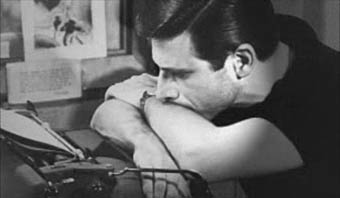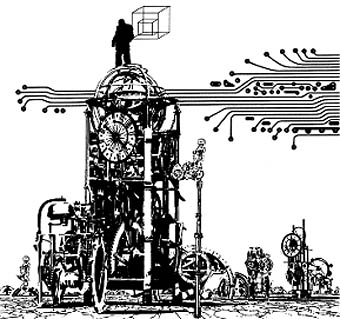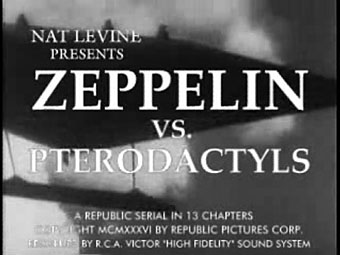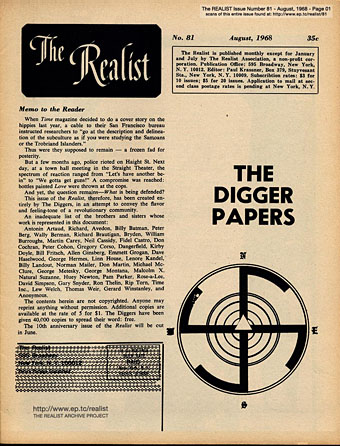Brave new worlds
| Moorcock remembers Arthur C Clarke. A great piece.
Tag: New Worlds
Harlan Ellison: Dreams with Sharp Teeth
Harlan Ellison.
“You have somebody who is one of the greatest writers of the twentieth century.”
Neil Gaiman on Harlan Ellison, and so say all of us. The quote comes from a trailer for Dreams with Sharp Teeth, a new documentary about Ellison’s life and work which, as far as I can tell, has yet to acquire any distribution. Given Ellison’s reputation you have to wonder why it’s taken this long for someone to make a substantial film about such a great artist and natural performer.
“Repent, Harlequin!” Said the Ticktockman, from a 1978 portfolio by Jim Steranko.
But it doesn’t arrive a moment too soon given the quantity of recent web discussion which seems to have forgotten his huge body of work and sees him solely as a person who gets into arguments all the time. He’s always been argumentative, of course, splendidly so, and his take-no-prisoners attitude did much to shake up the conservative world of American science fiction in the late Sixties and early Seventies. As a political commentator he’s always been at the Hunter S Thompson level with a great line in witty vituperation. The filmmakers seem to have caught both sides of Ellison, the writer who doesn’t so much read as perform his texts from memory, and the tightly-wound ball of fury who won’t take shit from anyone. The film site has nearly an hour of clips to watch, including a tremendous speed-reading of Prince Myshkin, and Hold the Relish.
And while we’re on the subject, I’ll give another plug to the landmark collection of HP Lovecraft-derived art due to appear soon from Centipede Press. This features a number of my Lovecraftian works and an introduction from Mr Ellison himself.
Previously on { feuilleton }
• The Bradbury Building: Looking Backward from the Future
• Revenant volumes: Bob Haberfield, New Worlds and others
Zeppelin vs. Pterodactyls
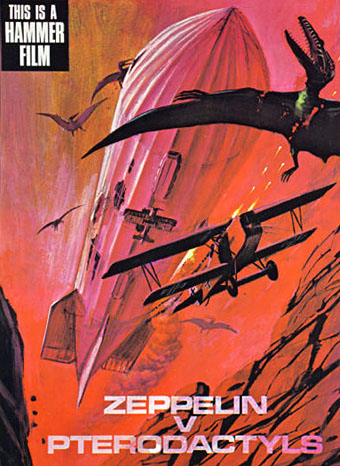
An unmade high-concept from Hammer Films’ early Seventies dalliance with pulp adventure, if you must know. Via Boing Boing via Jess Nevins via Airminded where we learn:
The story was along the lines of THE LAND THAT TIME FORGOT, with a German Zeppelin being blown off-course during a bombing raid on London and winding up at a “lost continent”-type place.
Rather like the Civil War balloon that’s blown off-course in Jules Verne’s Mysterious Island then, which ends up on Captain Nemo’s volcanic island of giant birds and insects. Of course, the mere fact that a film was never made is no obstacle for YouTube’s army of diligent mash-up artists and you can see Zeppelin v. Pterodactyls re-imagined as a 1936 Republic Serial here. (And on a pedantic professional note, an older font should have been used for the titles since Hermann Zapf didn’t design Palatino until the 1940s.)
It was another horror company, Amicus Productions, that produced The Land that Time Forgot (1975) (and its ER Burroughs-derived sequels, At the Earth’s Core [1976] and People that Time Forgot [1977]) so this Hammer concept may have been an attempt to follow Amicus’s lead and exploit the momentary flush of enthusiasm for ERB and co. Or perhaps they thought that Zeppelin movies were the next big thing after Michael York’s First World War adventure, Zeppelin, in 1971. No one in Hollywood these days would dare finance a film with a title like this. The same dumbing-down imperative that gave us Harry Potter and the Sorceror’s Stone (because Americans can’t be trusted to know what the Philosopher’s Stone is) would no doubt want “pterodactyls” replaced by “dinosaurs” or the wording of the whole thing reduced to ZvP.

U-boat vs. dinosaurs! Illustration by Frank R Paul for a 1927 reprint of The Land that Time Forgot.
The Land that Time Forgot was scripted by Michael Moorcock and New Worlds‘ (and Savoy Books) illustrator James Cawthorn. The pair did a decent job with the story although the film as a whole is let-down by silly monster effects, the pterodactyl (or is it a pteranodon?) in this instance being a lifeless thing swinging from a crane. Moorcock and Cawthorn worked together on Tarzan Adventures which Moorcock was editing as a teenager so they appreciated the material at least. This wasn’t the only connection New Worlds had with pulp cinema, more surprisingly JG Ballard had provided a story for Hammer in 1970 with When Dinosaurs Ruled the Earth. Hammer missed an opportunity in not hiring Moorcock for something seeing as he’d just written one of the first retro-dirigible (and pre-Steampunk) novels, The Warlord of the Air, in 1971. UK film producers had some of the best writers in the world under their noses yet could only offer them trash to work on. No wonder the British film industry went down the tubes in the Seventies after the American funding dried up.
My favourite pulp adaptation from Hammer is The Lost Continent based on Uncharted Seas by Dennis Wheatley. A typical Hammer product in the way the story is frequently preposterous yet the whole thing is made with the utmost seriousness. Amazon summarises the plot, such as it is:
This film starts out like The Love Boat on acid, as a cast of unpleasant characters, all with horrible secrets, take a chartered cargo ship to escape their troubles. Unfortunately, the leaky ship is carrying an explosive that can be set off by sea water and it sinks, stranding many characters in a Sargasso Sea populated by man-eating seaweed, giant monster crabs and turtles, and some Spanish conquistadors who think the Inquisition is still on.
Eric Porter is the ship’s captain, a very good actor who was superbly sinister and convincing as Professor Moriarty in Granada TV’s Sherlock Holmes adaptations. The Lost Continent was Wheatley’s shameless plundering of William Hope Hodgson’s Sargasso Sea tales, the book being originally written in 1938 when Hodgson was less well-known than he is today. Until the Pirates of the Caribbean films this was about the closest thing on screen to Hodgson’s world of drifting weed, lost galleons and man-eating monsters, so there you have its cult value. Just be ready with the fast forward button if you try and watch it.
Previously on { feuilleton }
• Moorcock on Ballard
• Coming soon: Sea Monsters and Cannibals!
• Revenant volumes: Bob Haberfield, New Worlds and others
• Druillet meets Hodgson
• Davy Jones
• The Absolute Elsewhere
The Adventures of Little Lou
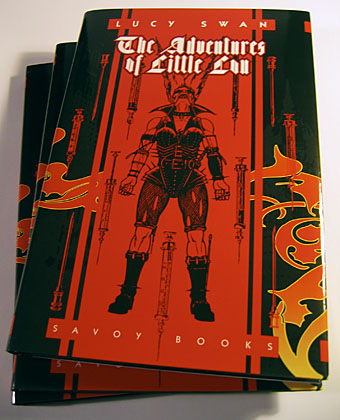
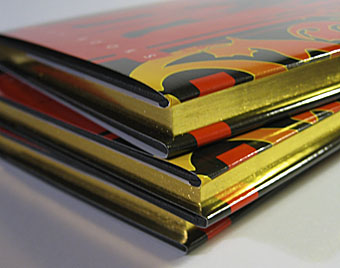
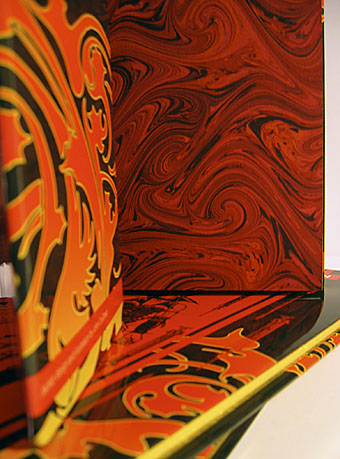
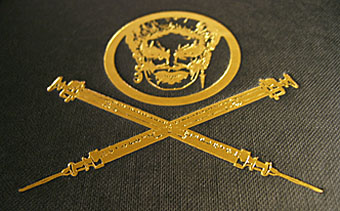
People ask me now and then what I prefer working on the most, and the answer is always the same—book design. The Adventures of Little Lou, a short novel by Lucy Swan for Savoy Books turned up today from the printers and it’s a good example of why I find this kind of work so enjoyable. For a start, the printers, Anthony Rowe Ltd, always do an excellent job. One of the things which makes CD design aggravating at times is the lack of care from pressing plants when it comes to print quality. But most of all there’s the pleasure of being able to make a book a beautiful object in its own right.
For this title we used gold blocking on the pages again and endpapers patterned with a red marbling design. The gold and red complements the dust jacket, and the scarlet swirls correspond to a number of motifs in the book, from the delirium of the characters’ drug states to the quantities of blood spilled as the story progresses. Lucy’s book riffs on David Britton’s Lord Horror and Meng and Ecker characters in much the same way that some of the New Worlds‘ writers of the late Sixties riffed on Michael Moorcock‘s Jerry Cornelius character, taking prior creations as a starting point for something new. This won’t appeal to a general readership; it’s vicious, offensive, scatalogical, wonderfully imaginative, downright nasty in places, and frequently very funny. But that’s okay, it’s a Savoy book, not another clunker from Jonathan Cape.
The Realist
The Digger issue, August 1968.
Here’s something of major importance, The Realist Archive Project. Four complete issues online so far, with a promise of all 146 issues to be uploaded eventually. The Realist started out as a satirical magazine in the late Fifties and moved into the slipstream of the counter-culture as the Sixties progressed. Editor Paul Krassner is introduced in the RE/Search Pranks (1987) book thus:
Paul Krassner is famous for doing The Realist (1958-1974; now revived), described by OUI magazine as “the most satirical and irreverent journal to appear in America since the days of HL Mencken.” The Realist published explicit photos, outrageous cartoons, vicious satire, and extreme paranoid conspiracy theories on topics ranging from the Kennedy assassinations to Jonestown. When Mike Wallace asked him on a 60 Minutes interview about the difference between the underground press and mainstream media, he told him that Spiro Agnew was an anagram for Grow A Penis, adding, “The difference is that I could print that in the Realist, but it’ll be edited out of this program.” That prediction came true. Harry Reasoner said of Krassner that he “not only attacks establishment values; he attacks decency in general.”
During his lifetime of weird experiences and friendships with notables like Lenny Bruce and Timothy Leary, Krassner claims (among other things) to have taken LSD when he testified at the Chicago 8 trial, on the Johnny Carson show, with Groucho Marx, and with Squeaky Fromme and Sandra Good. In 1977 he became publisher of Hustler magazine for six months.
I first encountered the Realist from mentions in Robert Anton Wilson’s books (RAW was one of its writers) but, unlike UK undergrounds which often turned up secondhand, there was no way to ever see a copy over here. Hence the value of this archive. If you want an idea of Krassner’s outrageousness—which makes much of the political sniping of Private Eye seem very tame indeed—look no further than the May 1967 issue with its lead story describing Lyndon B Johnson fucking the dead John F Kennedy’s neck wound shortly before his being sworn in as president. And in the same issue there’s the notorious cartoon spread by Wally Wood depicting a host of Disney characters doing all the things that recently-deceased Uncle Walt wouldn’t allow them to do in the cartoons. That drawing was so scurrilous that it’s generally supposed Disney preferred not to sue for fear of giving it greater publicity.
The issue edited by the anarchist Diggers was altogether more serious, and the list of names involved shows a lineage connecting the Beats to the hippies:
Memo to the Reader
When Time magazine decided to do a cover story on the hippies last year, a cable to their San Francisco bureau instructed researchers to “go at the description and delineation of the subculture as if you were studying the Samoans or the Trobriand Islanders.”
Thus were they supposed to remain—a frozen fad for posterity.
But a few months ago, police rioted on Haight St. Next day, at a town hall meeting in the Straight Theater, the spectrum of reaction ranged from “Let’s have another be-in” to “We gotta get guns!” A compromise was reached: bottles painted Love were thrown at the cops.
And yet, the question remains—What is being defended?
This issue of the Realist, therefore, has been created entirely by The Diggers, in an attempt to convey the flavor and feeling-tone of a revolutionary community.
An inadequate list of the brothers and sisters whose work is represented in this document:
Antonin Artaud, Richard Avedon, Billy Batman, Peter Berg, Wally Berman, Richard Brautigan, Bryden, William Burroughs, Martin Carey, Neil Cassidy, Fidel Castro, Don Cochran, Peter Cohon, Gregory Corso, Dangerfield, Kirby Doyle, Bill Fritsch, Allen Ginsberg, Emmett Grogan, Dave Haselwood, George Hermes, Linn House, Lenore Kandel, Billy Landout, Norman Mailer, Don Martin, Michael McClure, George Metesky, George Montana, Malcolm X, Natural Suzanne, Huey Newton, Pam Parker, Rose-a-Lee, David Simpson, Gary Snyder, Ron Thelin, Rip Torn, Time Inc., Lew Welch, Thomas Weir, Gerard Winstanley, and Anonymous.
The contents herein are not copyrighted. Anyone may reprint anything without permission. Additional copies are available at the rate of 5 for $1. The Diggers have been given 40,000 copies to spread their word: free.
Many of those writers are no longer around but happily Paul Krassner is and he’s been writing regularly for The Huffington Post, the Arthur magazine weblog and other sites.
Via Boing Boing.
Previously on { feuilleton }
• Ginsberg’s Howl and the view from the street
• Simplicissimus
• Revenant volumes: Bob Haberfield, New Worlds and others
• Underground history
• Wallace Burman and Semina
• Robert Anton Wilson, 1932–2007
• Barney Bubbles: artist and designer
• 100 Years of Magazine Covers
• Oz magazine, 1967-73

